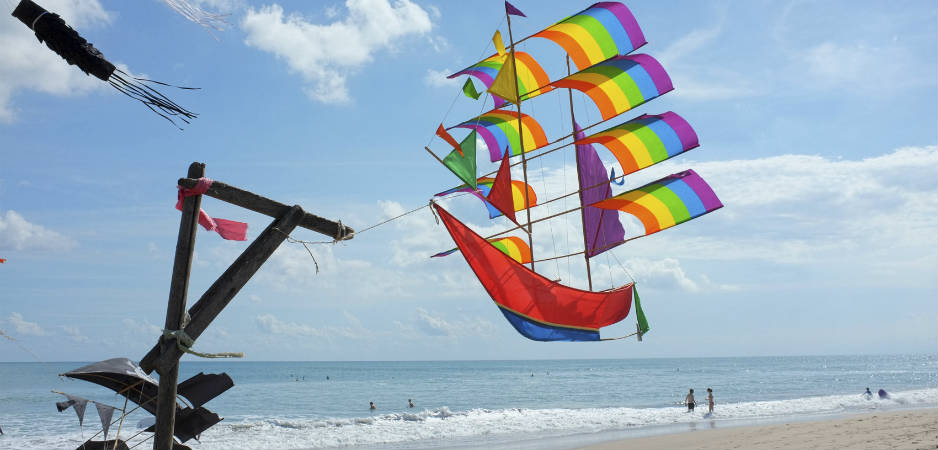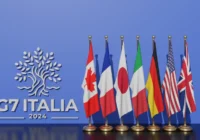Despite the commonplace homophobia in Asian societies today, no nation can deny a presence of LGBT practices in its history.
A few years ago, most Indonesians probably didn’t know what the acronym LGBT—lesbian, gay, bisexual and transgender—stood for. And yet for the past few months, it has become one of the most debated topics in the country. Predictably, for a nation that fancies itself religious, a great proportion of the public professes to disapprove of homosexuality.
The LGBT community is now seen as a national threat by at least one government ministry. At a recent training session of Bela Negara, a new militia group sponsored by the Ministry of Defense to restore nationalism in ordinary Indonesians, Reuters reported that the instructor had exhorted the participants to guard against “evil foreign influences” such as communism, drugs and homosexuality.
At Odds With History
The explicit claim that homosexuality is somehow alien to Indonesian culture, however, may be at great odds with historical records. Widely regarded as the Javanese Kama Sutra, Serat Centhini—commissioned and partially written in the early 1800s by the crown prince of the Mataram Surakarta Kingdom, who would later become Solo’s sovereign Pakubuwana V—details sex between men (gemblak) in Ponorogo, and the existence of warok (butch gay men) and jathil (effeminate gay men) in the East Javanese town.
Serat Centhini was an official royal court publication, a 12-volume compendium on sexuality compiled by members of the royal family and court poets. Though homosexuality was by no means described as a widespread practice, it was neither seen as an offence nor a threat to society.
Other ethnic groups inhabiting the Indonesian archipelago in the past also dealt with sexuality in surprisingly tolerant ways. The Bugis people of South Sulawesi, for instance, recognize five genders: makkunrai (cisgender female), oroané (cisgender male), bissu (androgynous), calabai (transgender male) and calalai (transgender female). The bissu, now almost extinct, were seen to both encompass and transcend all other gender types and were therefore highly respected. For the old Bugis, the bissu acted as wise beings or shamans, to be consulted on cultural and societal matters.
Conversely, however, homophobia in Indonesia is a recent phenomenon. Sutjipto’s account clearly shows that even in 1920s homosexuality was not seen as a serious social aberration by the natives. By contrast, in countries like Great Britain, sodomy had already been criminalized.
During the Dutch colonial era, indigenous gay scenes also existed alongside their Dutch counterparts. An important manuscript written in 1928 and published in 1992 as My Life: an Autobiography of a Javanese Gay Aristocrat in the Early 20th Century tells the story of Sutjipto, a gay Javanese man of noble birth. In the book, the author candidly describes his gay sexual experiences. He met his first lover—a 20-year-old student—in Situbondo, when he was 13. In turn, he learned that his lover’s first lover was a native (pribumi) doctor in Kediri.
Although Sutjipto would later have relationships with Dutch men, his testimonies confirmed the fact that homosexuality among native Indonesians existed irrespective of Dutch cultural influences. Sutjipto’s stories about various gay relationships he encountered in the 1920s also gave the impression that homosexuality was, at this juncture in Indonesian history, not seen as a great taboo at all. Within the Madurese community in Situbondo, he relates, gay relationships among the folk theatre performers of Saronen were quite common.
A Recent Phenomenon
Evidently, against such historical accounts, to claim that homosexuality is somehow a recent foreign import is flawed. Conversely, however, homophobia in Indonesia is a recent phenomenon. Sutjipto’s account clearly shows that even in 1920s homosexuality was not seen as a serious social aberration by the natives. By contrast, in countries like Great Britain, sodomy had already been criminalized.
Homophobia in Indonesia became more pronounced alongside the rise of political Islam just before and after the fall of President Suharto in 1998. Sensing a growing loss of support from his old political ally— the military—Suharto openly courted political Islam in 1990s, spurring the calls for more conformity to Sharia law among Indonesia’s Muslims.
The rise of Islam as a social and political force in post-Suharto Indonesia also owed a great deal to the many religious scholars sent to study Islam at various academies in the Middle East. While some came back with a vision of Islam as a force of peace—notably Indonesia’s fourth President Abdurrahman Wahid, who studied at Egypt’s religious Al-Azhar University—many returned to Indonesia determined to “purify” Islam according to Arabic tenets, including the intolerance against homosexuality.
Interestingly, by way of cultural diffusion, homophobia has also become ingrained within Indonesian ethnic groups traditionally associated with tolerance for sexual minority groups like the Balinese. In 2015 a furor erupted when photos of a wedding between two men presided by a Balinese Hindu priest made rounds on the internet. No less than Governor I Made Mangku Pastika and eminent religious elders such as Jro Gede Suwena spoke out against it. The latter suggested that all Hindu temples on the island hold cleansing rituals in the aftermath of the incident.
Everyone else toed the line, too: The police diligently started an investigation into the matter, charging the event organizer with “denigration of religion,” while the local association of wedding planners dutifully echoed another condemnation against what was seen as an aberrant act against the natural order.
Hindu Tolerance
The whole palaver was surprising, given the fact there were countless other gay weddings performed in Bali. Moreover, the scriptures of Hinduism, the religion of most Balinese, don’t contain condemnation of LGBT people as the Bible or the Islamic Hadiths do. Hindu sacred texts never hold LGBT people to be inferior to their heterosexual counterparts. Hindu mythology itself contains allusions to LGBT figures playing crucial parts in time-honored sacred narratives. To name one, Shikhandi, who was key to ensuring the victory of the Pandavas in the Kurukshetra War of the Mahabharata was, succinctly put, a man trapped in a woman’s body. Despite this, Shri Krishna, the protector god Vishnu incarnate, didn’t mind sharing a chariot with the transgender warrior.
One of the ultimate forms of the divine in Hinduism is Ardhanarishvara, considered the apex of masculine and feminine balance, portrayed as a half-man-and-half-woman deity. Other Hindu deities were never known to shirk from sex changes, either: Shiva once turned into a milkmaid after bathing in the Yamuna River, Vishnu assumed his female form Mohini to marry Arjun’s son Aravan and in this form even bore Shiva a son, the god Maha-sastha. In another famous Hindu epic, Ramayana, we also read about the two women who make love to procreate without the aid of men.
Indian historian Manu Bhagavan argues that India’s current rigid sexual mores were inherited from the British who outlawed homosexual acts throughout their empire. Indian mythologist Devdutt Pattanaik agrees with this analysis: “The British reinforced this view by creating the ‘sodomy’ law, referring to the biblical city of Sodom that was destroyed by God as it was rife with sexual deviations. Subjects of the British empire, Hindus included, were keen to distance themselves from all such things vile; they were determined to prove themselves pure, even if it meant wiping out or denying their own legacy.”
The specter of national humiliation and being thought as primitive were so great that in 1950s the local governor of Bali banned foreign tourists from photographing the unwary topless women.
However, this model of colonial transference can hardly apply to Bali or Indonesia since the Dutch never criminalized homosexual acts as the British did. Bali was also known to play host to various avant-garde Europeans in the 1930s, establishing itself as an idyllic Bohemian paradise that attracted even Hollywood stars.
The Dutch rulers of Indonesia, known as the Dutch East Indies then, were mostly interested in trade and consolidating their power, leaving cultural and indigenous affairs to the local rulers. Balinese women in those days walked about their business bare-breasted, unhindered.
Ironically, it was after Indonesia’s independence that cultural changes in the name of post-colonial nationalism came about. Both Indonesia’s first and second presidents, Sukarno and Suharto, were scandalized by the topless Balinese woman. Sukarno’s government thought it inconsistent with the dignity of a modern state. Despite being an art lover who collected depictions of these very women, Sukarno feared that a great nation like Indonesia would be seen as primitive because of such traditions. His mode of thinking was colored by European moral values, which became obvious as the changes in his attitude occurred once he came to power.
The specter of national humiliation and being thought as primitive were so great that in 1950s the local governor of Bali banned foreign tourists from photographing the unwary topless women. Over time, Balinese women were systematically shamed into covering up their bodies, in deference to the prevalent dress code elsewhere in Indonesia.
Fluid Sexuality
It’s no exaggeration to say that, despite the commonplace homophobia in Asian societies of today, no Asian nation can boast the absence of LGBT communities in their respective histories. In ancient China, for example, one of the Eight Immortals in the Taoist pantheon, Lan Caihe, is depicted as a sexually ambiguous being. During the Qing Dynasty in 17th century, a cult of the Rabbit Lord, or Tu’er Shen, was born.
Tu’er Shen was worshipped as the deity responsible for regulating the sexual relationships between men. It became popular enough that the Confucian scholars at the Qing court tried to suppress it. Even so, the cult had generated enough appeal that whole villages still erected secret shrines to the Rabbit Lord despite an imperial ban on it.
If anything, history has taught us that LGBT people have always existed as minority groups throughout human history. It is ironic that Indonesia, priding itself as the third largest democracy, should treat the rights of these minority groups such cavalierly. Meanwhile, in mostly autocratic China, the government signals a less rigid stance on the issue. While Beijing neither encourages nor disapproves of LGBT rights, it was flexible enough to grant former prime minister of Iceland Jóhanna Sigurðardóttir’s wife, Jónína Leósdótti, the same deference as any spouse of a visiting foreign dignitary during the former’s official visit in 2013.
Although the Chinese state media “airbrushed” the spouse from news reports, the very fact that the couple was allowed to appear together at all is something that is difficult to imagine taking place in Indonesia. In light of the documented existence of sexual minorities throughout Indonesian history, it is sad that LGBTs today face state-sanctioned discrimination, all in the name of nationalism and nation building.
The views expressed in this article are the author’s own and do not necessarily reflect Fair Observer’s editorial policy.
Photo Credit: JonnieFrank
 We bring you perspectives from around the world. Help us to inform and educate. Your donation is tax-deductible. Join over 400 people to become a donor or you could choose to be a sponsor.
We bring you perspectives from around the world. Help us to inform and educate. Your donation is tax-deductible. Join over 400 people to become a donor or you could choose to be a sponsor.
Support Fair Observer
We rely on your support for our independence, diversity and quality.
For more than 10 years, Fair Observer has been free, fair and independent. No billionaire owns us, no advertisers control us. We are a reader-supported nonprofit. Unlike many other publications, we keep our content free for readers regardless of where they live or whether they can afford to pay. We have no paywalls and no ads.
In the post-truth era of fake news, echo chambers and filter bubbles, we publish a plurality of perspectives from around the world. Anyone can publish with us, but everyone goes through a rigorous editorial process. So, you get fact-checked, well-reasoned content instead of noise.
We publish 2,500+ voices from 90+ countries. We also conduct education and training programs
on subjects ranging from digital media and journalism to writing and critical thinking. This
doesn’t come cheap. Servers, editors, trainers and web developers cost
money.
Please consider supporting us on a regular basis as a recurring donor or a
sustaining member.
Will you support FO’s journalism?
We rely on your support for our independence, diversity and quality.






